This article was medically reviewed by Cristian Macau, DDS. Dr. Macau is an oral surgeon, periodontist, and aesthetician at Favero Dental Clinic in London. He received his DDS from Carol Davila University of Medicine in 2015.
wikiHow marks an article as reader-approved once it receives enough positive feedback. In this case, 83% of readers who voted found the article helpful, earning it our reader-approved status.
This article has been viewed 390,403 times.
An overbite is a common dental condition that occurs when your teeth do not match up properly. It can develop in early stages of childhood due to habits such as thumb sucking, pushing the tongue against the teeth, or extended use of a pacifier. When the arch and the palate become narrow, the lower jaw has no other option but to move back, leaving the upper teeth to overlap the lower jaw. Overbite also occurs in patients who lose their back teeth, especially their molars. Although overbite is normally treated between the ages of 10 – 12 years old, anyone with an overbite — regardless of age — can and should be treated.[1]
Steps
Diagnosing Overbite at Home
-
1Close your mouth normally. Place your teeth together naturally making sure your jaw remains relaxed without forcing your teeth together. This helps your teeth to position naturally and you can identify if your teeth overlap at the bottom.
- Do not force your teeth together as this may produce exaggerated results.
-
2Look in a mirror and smile. In order to self-diagnose an overbite, you need a mirror to help you visualize your teeth. While standing in front of a mirror, smile and reveal your teeth.
- Position yourself as close to the mirror as possible and smile so that you spread your lips away from the teeth.
- Check to see if your upper teeth fall over the top of your bottom front teeth.
- If your teeth noticeably overlap the bottom (more than 3.5 mm), your bite alignment is off and you have an overbite.[2]
- You may also feel your lower row of teeth biting close to or into the roof of your mouth.
Advertisement -
3Diagnose the type of overbite. When your teeth are not properly aligned you suffer from a condition called malocclusion. There are two categories of malocclusion classified as overbite and one classified as underbite.[3]
- Class 1 is the most common class. If you have a class 1 overbite, your bite is normal; however, the upper teeth overlap the bottom teeth.
- Class 2 is when the upper jaw and the teeth significantly overlap the bottom jaw and teeth. When viewed from the side, the chin is behind the normal position.
- Class 3 malocclusion (also called underbite or prognathism) is when the lower jaw protrudes so that the teeth overlap the upper jaw and teeth.
-
4Have your teeth checked by a dentist. If the home test indicated that you may have an overbite, it is best to have it checked by a dentist who can do it during a routine exam.
- If left untreated, an overbite can have some health consequences such as headache, tooth decay, speech difficulties, mouth breathing, and difficulty chewing.[4] It can also lead to TMJ disorders which can influence your posture.
Diagnosing Overbite at the Dentist’s Office
-
1Go to a dentist. Having regular visits to a dentist can correct any teeth problems and is highly recommended at least twice a year. If you experience discomfort or pain associated with the overbite, your dentist can provide the appropriate diagnosis and treatment.
- It is estimated that overbite affects up to 46% of children and nearly 30% of children would benefit from treatment. Thus, early diagnosis is essential for the treatment of overbite and to prevent any complications.[5]
-
2Get a dental exam. A typical dental exam or checkup will be done by a dental hygienist followed by a consultation with the dentist.
- During the checkup, the overall condition of your teeth will be noted and the dentist will take a look at your teeth to assess if you have an overbite.
-
3Say yes for an x-ray. Your dentist can usually diagnose overbite by just looking at your bite; however, they may also take dental x-rays to visualize your jaw and teeth. This is especially important in children if their permanent teeth have not yet erupted.[6]
- Dental x-rays help your dentist to diagnose how your child's permanent teeth are positioned and/or see any damage or dental diseases.[7]
- If the dentist sees any problems in your x-rays, including cavities or decays, treatment options will be discussed.
-
4Consult an orthodontist. If your dentist will confirm that you have an overbite, they will refer you to an orthodontist. An orthodontist is an expert at correcting and realigning the teeth.
- Orthodontists have two to three years more education compared with dentists and are trained to treat overbite and other conditions due to misaligned teeth.
- During your consultation, treatment options to correct the bite will be discussed.
- Treating an overbite is essential for your health as it can decrease your chances of tooth decay or gingivitis, and help lessen the strain malocclusion has on the teeth, jaws, and muscles.[8]
Treating Overbite
-
1Get braces. Braces are one of the most common ways to treat overbite in childhood. Braces help with the realignment of teeth by applying pressure and directing the teeth to move in a certain direction.[9]
- Braces consist of metal brackets and arch wires that are attached to your teeth. Tiny elastic bands will then be used to hold the archwire to the brackets.
- It should be noted that teeth will usually be sore once braces are applied. The wire, bands, and brackets may also irritate the tongue, cheeks or lips. Discomfort can last for up to two weeks.
-
2Ask about aligners. Another option in correcting overbite is getting aligners. They function just like a retainer and fit tightly over the teeth.
- Aligners are invisible, acrylic molds that are preferred by some as they can be removed for eating and brushing.
- Since aligners are custom made they are more recommended for teens and adults instead of children.
-
3Ask if you need teeth removal. If your overbite is caused by overcrowding, tooth extraction may be needed to solve the problem.[10]
- When a tooth is extracted it is removed from its socket inside the bone. The dentist will take x-rays to isolate which teeth need to be extracted and may administer antibiotics or anesthesia depending on the type of procedure.
- There are two types of dental extractions:
- During a simple extraction, the dentist will loosen the tooth with an elevator instrument. Once loose, forceps will be used to remove the tooth.
- During a surgical extraction, the dentist will make a small cut into the gum and the tooth, or the bone around the tooth may be cut to make the extraction easier. This type of extraction is commonly done under anesthesia.
-
4Inquire about teeth repair. When you have an overbite, the misalignment can cause strain on your jaw and muscles, leaving your body to respond by grinding the teeth into a more comfortable position.[11]
- However, this grinding can cause teeth to wear and chip. Your dentist can help solve this problem by capping the teeth or providing a nighttime mouth guard.
- Another option is a TENS machine made specifically to stop teeth grinding. To use this method, you attach an electrode to your jaw. When it senses tension in your jaw due to grinding or clenching, it will deliver an impulse to relax the muscle and stop the behavior.
-
5Ask about surgery. Oral surgery is a treatment solution used when orthodontic treatment, such as braces or aligners, do not correct the overbite.
- Horizontal maxillary protrusion is the type of surgery done to fix an overbite. During the operation, the jaw is moved and the overbite is corrected.
Expert Q&A
Did you know you can get expert answers for this article?
Unlock expert answers by supporting wikiHow
-
QuestionI can fit the full tip of my pointer finger completely in the gap of my overbite. Will braces fix that, or is it a bigger problem?
 Cristian Macau, DDSDr. Macau is an oral surgeon, periodontist, and aesthetician at Favero Dental Clinic in London. He received his DDS from Carol Davila University of Medicine in 2015.
Cristian Macau, DDSDr. Macau is an oral surgeon, periodontist, and aesthetician at Favero Dental Clinic in London. He received his DDS from Carol Davila University of Medicine in 2015.
Doctor of Dental Surgery
-
QuestionWhat about when you have an overbite and you have permanent teeth? Do you need braces when that happens?
 Cristian Macau, DDSDr. Macau is an oral surgeon, periodontist, and aesthetician at Favero Dental Clinic in London. He received his DDS from Carol Davila University of Medicine in 2015.
Cristian Macau, DDSDr. Macau is an oral surgeon, periodontist, and aesthetician at Favero Dental Clinic in London. He received his DDS from Carol Davila University of Medicine in 2015.
Doctor of Dental Surgery
Warnings
- Think about getting a second opinion if your dentist recommends a corrective surgery.⧼thumbs_response⧽
- Be careful not to confuse this condition with buckteeth. This is when the upper and lower jaw align but the upper teeth stick out.⧼thumbs_response⧽
References
- ↑ http://www.nlm.nih.gov/medlineplus/ency/article/001058.htm
- ↑ http://www.ncbi.nlm.nih.gov/pubmed/15222706
- ↑ http://www.nlm.nih.gov/medlineplus/ency/article/001058.htm
- ↑ http://www.nlm.nih.gov/medlineplus/ency/article/001058.htm
- ↑ http://www.ncbi.nlm.nih.gov/pubmed/15222706
- ↑ http://www.ada.org/~/media/ADA/Publications/Files/patient_58.ashx
- ↑ http://www.mouthhealthy.org/en/az-topics/x/x-rays
- ↑ http://www.nlm.nih.gov/medlineplus/ency/article/001058.htm
- ↑ http://www.nlm.nih.gov/medlineplus/ency/article/001058.htm
About This Article
To diagnose an overbite at home, relax your jaw, close your mouth normally, and see if your teeth overlap at the bottom. You can also smile in front of a mirror and check if your upper teeth fall over the top of your bottom front teeth. If you suspect you have an overbite, make an appointment with your dentist, since some overlapping of the teeth is normal. Depending on your condition, your dentist may recommend treatments, such as braces or aligners. To learn how to diagnose an overbite with x-rays, keep reading!
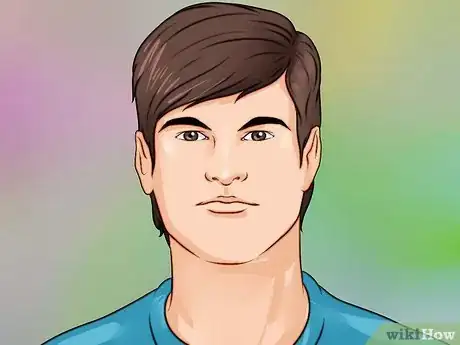
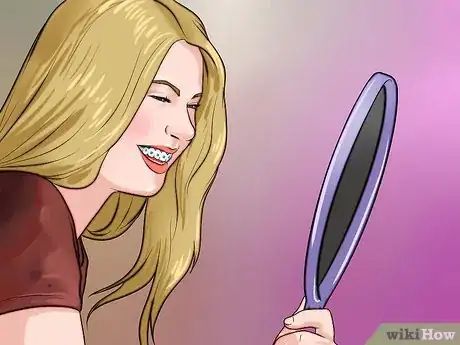



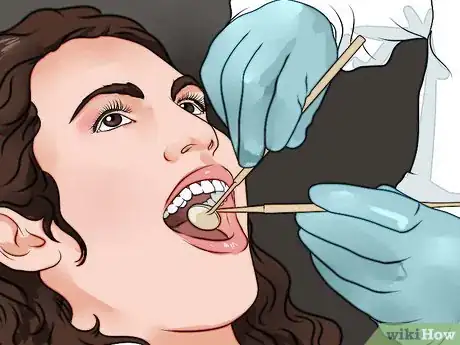
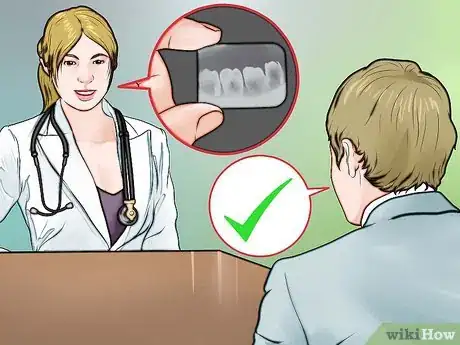
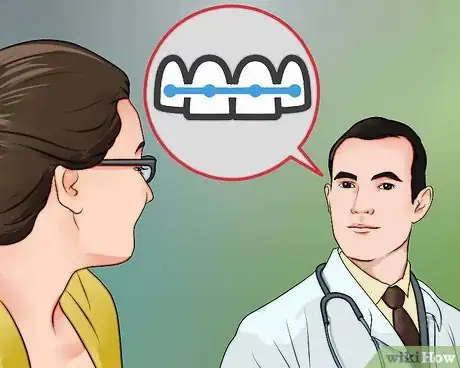


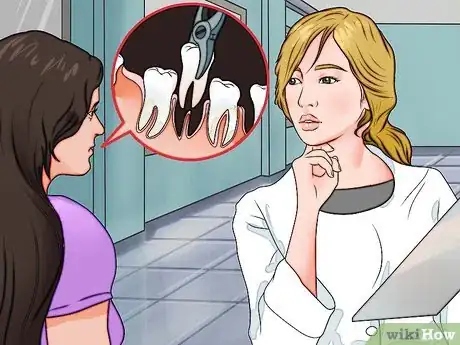
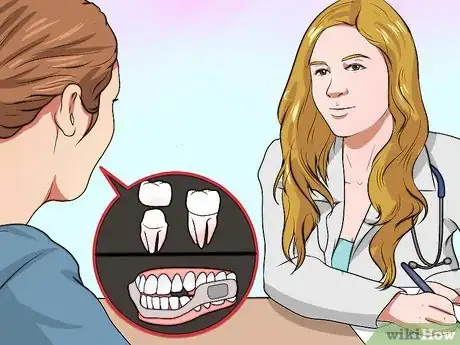
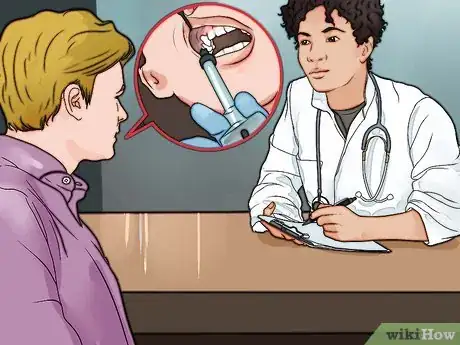
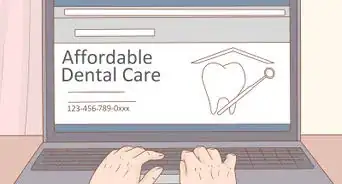
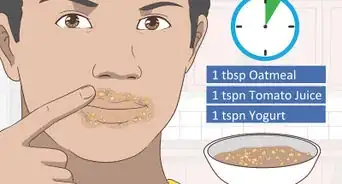

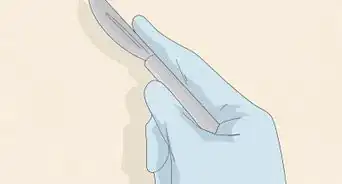



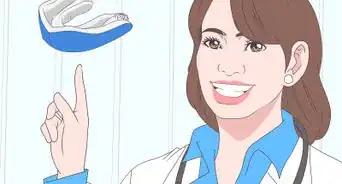

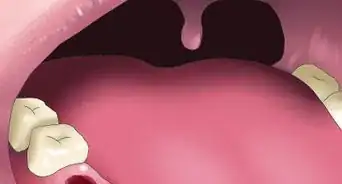
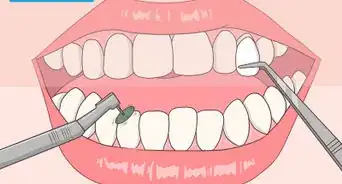
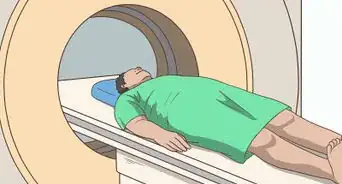
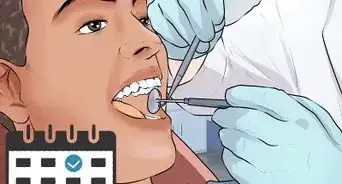










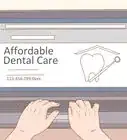

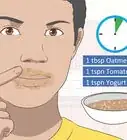
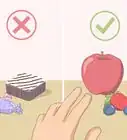



































Medical Disclaimer
The content of this article is not intended to be a substitute for professional medical advice, examination, diagnosis, or treatment. You should always contact your doctor or other qualified healthcare professional before starting, changing, or stopping any kind of health treatment.
Read More...